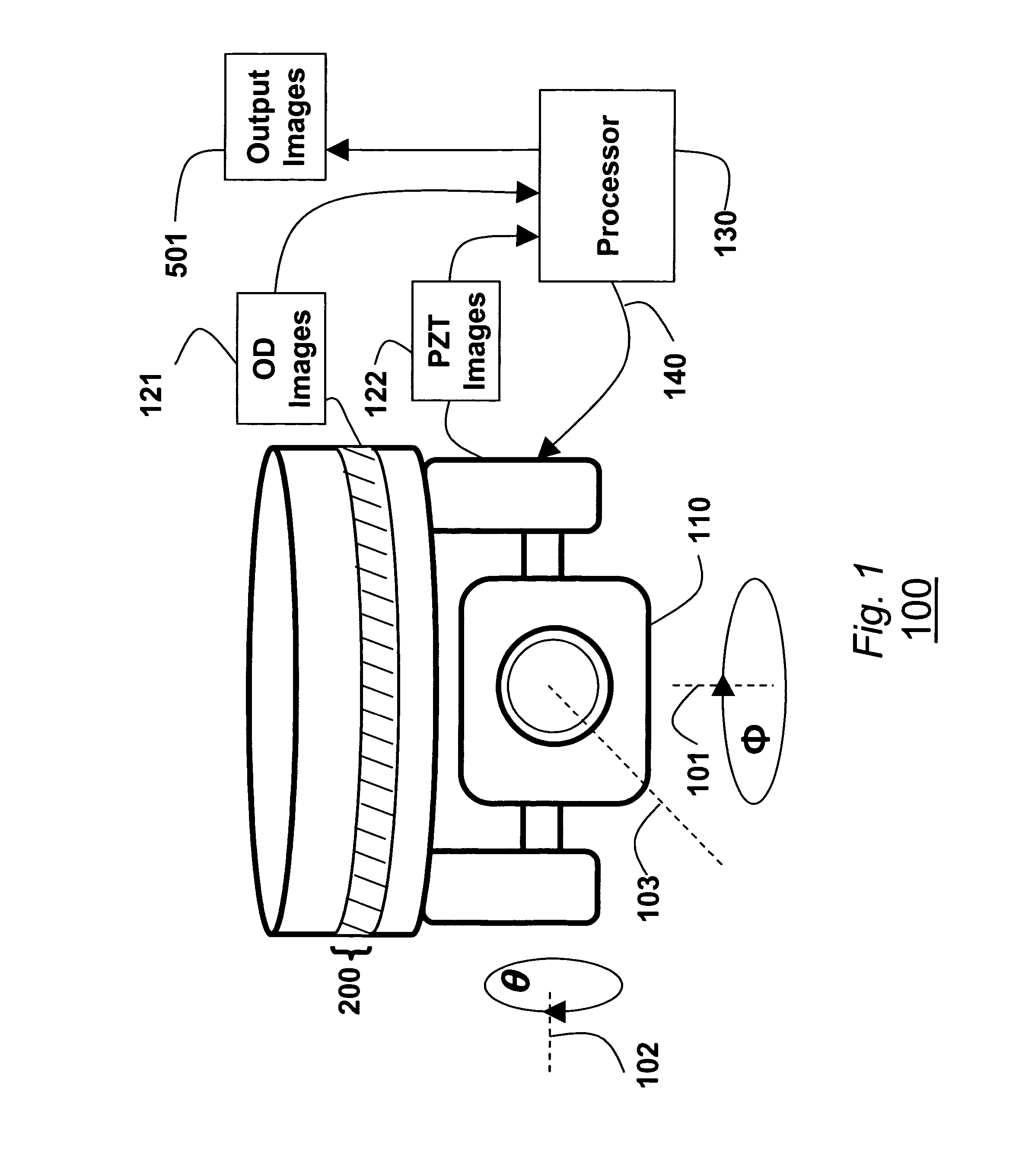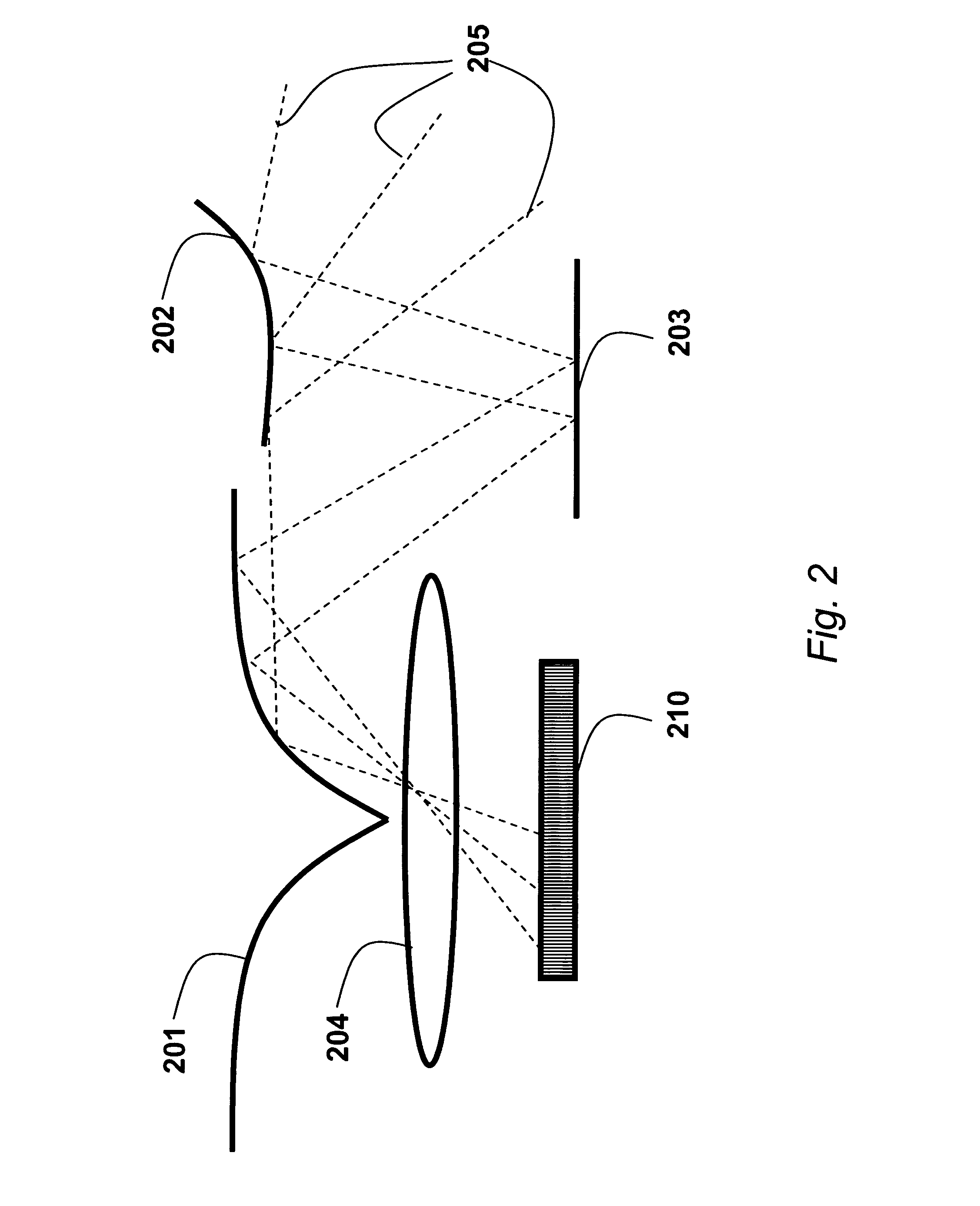Composite surveillance camera system
a camera system and surveillance technology, applied in the field of surveillance systems, can solve the problems of significant events going undetected, the remaining portion of the scene cannot be viewed, and it is difficult to direct the pzt camera at events in a timely manner
- Summary
- Abstract
- Description
- Claims
- Application Information
AI Technical Summary
Problems solved by technology
Method used
Image
Examples
Embodiment Construction
[0018]FIG. 1 shows a composite camera 100 according to one embodiment of the invention. The composite camera 100 includes an omni-directional (OD) imager 200, and a pan-tilt-zoom (PZT) imager 110. The optical centers of the OD and PZT imagers are substantially colocated. That is, any difference in their locations can be ignored for practical applications, as described below.
[0019] The OD imager 200 acquires OD images 121 of a scene. The PTZ imager 110 is mounted to rotate about a vertical axis 101 and a horizontal axis 102. The PZT imager can also zoom along an optical axis 103 of the imager. The PZT imager acquires PZT images 122 of the scene. The OD images 121 are processed by processor 130 as described below. The result of the processing can then be used to direct 140 the PTZ imager 110 at events in the scene. Events can be moving objects, e.g., people, cars, and / or doors; or changes in the environment, e.g., water, smoke, and / or fire. The processor can also generate output imag...
PUM
 Login to View More
Login to View More Abstract
Description
Claims
Application Information
 Login to View More
Login to View More - R&D
- Intellectual Property
- Life Sciences
- Materials
- Tech Scout
- Unparalleled Data Quality
- Higher Quality Content
- 60% Fewer Hallucinations
Browse by: Latest US Patents, China's latest patents, Technical Efficacy Thesaurus, Application Domain, Technology Topic, Popular Technical Reports.
© 2025 PatSnap. All rights reserved.Legal|Privacy policy|Modern Slavery Act Transparency Statement|Sitemap|About US| Contact US: help@patsnap.com



